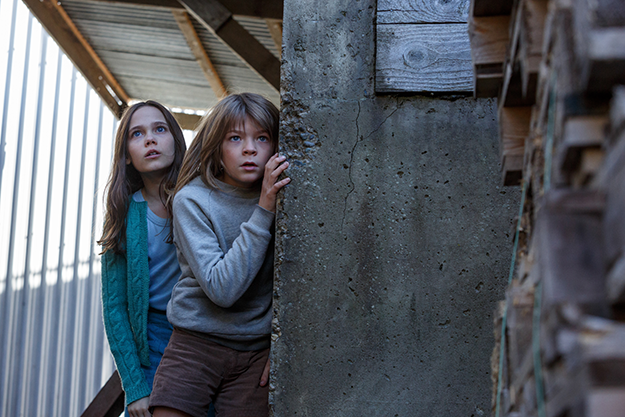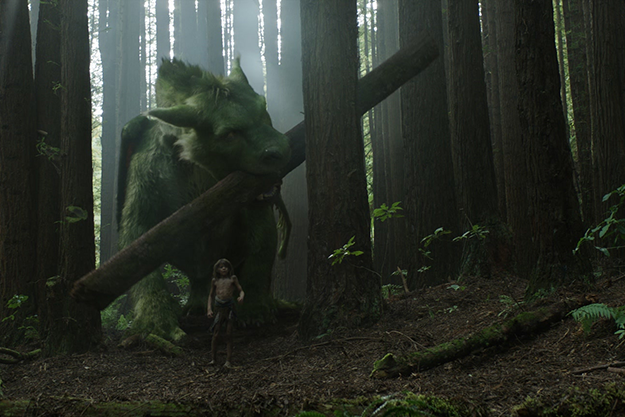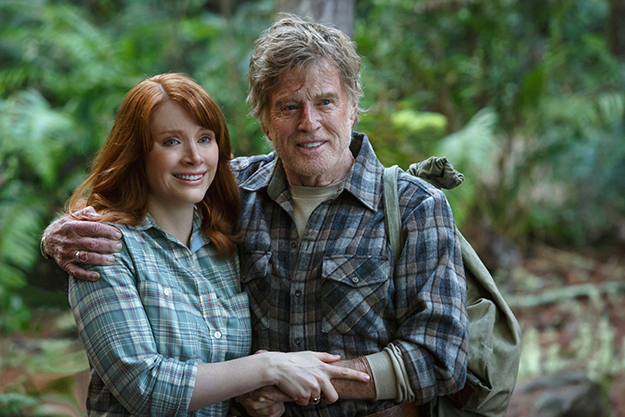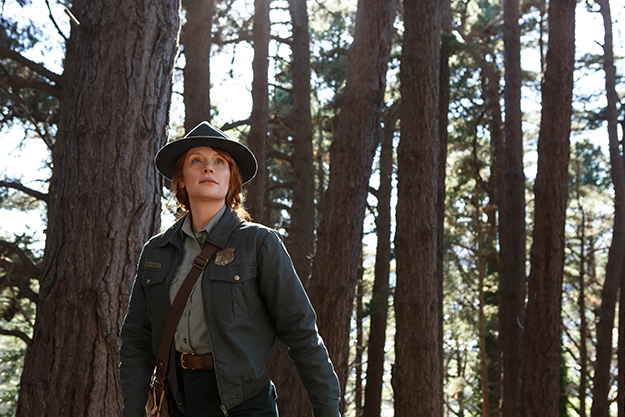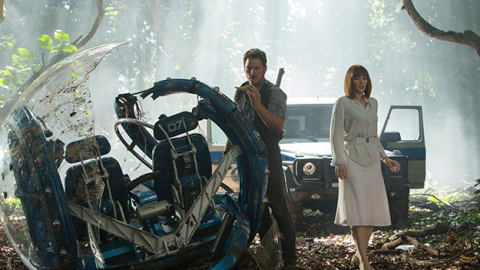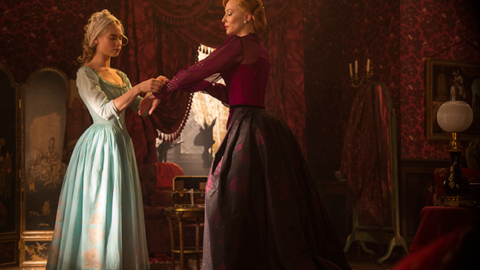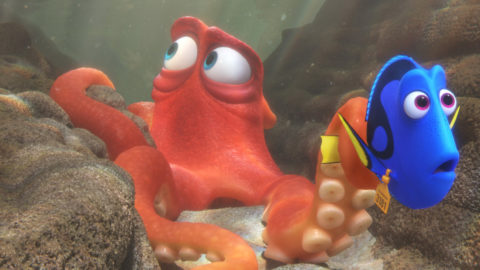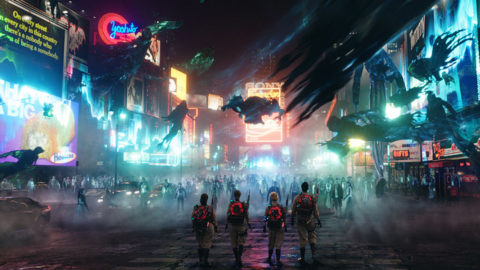Deep Focus: Pete’s Dragon
David Lowery has the creative alchemy to transform time and place into poetry. He proved it in his debut feature, Ain’t Them Bodies Saints (13), which unfolded in a gritty yet mythic 1970s Southwest. In that stunningly lyrical movie, outlaws and lawmen drive big old American cars, and they stride through Texas scrubland in muddy boots and weathered clothing. They cast giant shadows as they trigger traditional cowboy movie clashes between freedom and responsibility, loyalty and ethics. And beyond the morality plays, the movie slakes a contemporary hunger for lyricism and grandeur.
Given its starting point, Lowery’s new film is even more impressive. In his captivating reimagining of the crass Disney kiddie film Pete’s Dragon, Lowery places a simple story about an orphan and a dragon in a non-specific “recent past” that both harks back to 1977, when the original movie was released, and creates a timeless world out of rural Americana. With images of a five-year-old studying a bound children’s book and a carver etching dragon motifs into wood, the film eases us into a world where everything feels handmade, including the dragon—which is computer-generated. This Pete’s Dragon hinges, as did the earlier one, on the friendship between a dragon and a boy. But Lowery’s film bears little resemblance to the clumsy live-action/animated musical farce that was set in a travesty of Maine.
In this version, lush Pacific Northwest timberlands and the quaint, pocket-size town of “Millhaven” (actually, New Zealand woods and the village of Tapanui) become an eternal playground of the mind. The storyline is wispy (Lowery and Toby Halbrooks did the script), but the director fills every minute with emotion. The film transcends its familiar young-adult concerns—courage, maturity, and family—to become a piece of magic that is also about magic. In its own poignant, whimsical way, Pete’s Dragon salutes imagination’s power to help people embrace experience, not escape from it.
The twin anchors for Lowery’s sorcery are Oakes Fegley’s Pete, a nimble, clear-eyed lad, and his unusual green dragon, furry but still fearsome, who takes the boy under his pterodactyl-like wings when the child is left parent-less and alone in a virgin forest. Pete dubs the dragon “Elliot,” after the canine hero of his storybook (the one thing he preserves from his previous life), and there is something dog-like about dragon-Elliot’s warmth and devotion. Lowery never commits the error of making Elliot too cuddly or Pete too needy. They live out an elating action-packed idyll, playing hide and seek through thick old growth, racing zigzag in and out and over gullies and streams, and in the most exhilarating moment, turning a death-defying “trust me” exercise into a game.
Just when his peers outside the woods would be entering middle school, Pete makes his first human contacts in half a decade. First he spies on a forest ranger named Grace (Bryce Dallas Howard) and pockets a compass she leaves behind. Then hardheaded Gavin (Karl Urban), the leader of a lumberjack crew from a local mill, cuts too deep into the forest, bringing his boss and brother, Jack (Wes Bentley), into the picture, along with Jack’s 11-year-old daughter, Natalie (Oona Laurence), and, again, Grace, who happens to be Jack’s sweetheart. Pete gets hauled back into civilization. Elliot tries to find his friend before the lumberjacks shoot him down.
The movie’s scenario and, more important, its qualities of feeling, bring to mind classics as different as The Black Stallion, The Wild Child, and King Kong. At the midpoint, Elliot gazes through a window and sees Pete getting comfy at Jack’s house, as Jack reads Pete and Natalie the dog book Elliot Gets Lost (which the not-quite-literate Pete used to “read” to his dragon friend). In that pregnant moment, Elliot becomes almost as potent a tearjerker as Barbara Stanwyck witnessing her daughter’s wedding through a window in Stella Dallas. Pete starts out experiencing the call of the wild—his howls, like Elliot’s, are funny, scary, and heartbreaking in turn. But Pete can’t resist the lure of the hearth in a human home.
Though several of the movie’s comic and dramatic beats echo contemporary classics, including The Iron Giant and E.T. the Extra-Terrestrial, Lowery suffuses them with his own fierce and melancholy notes. Before the movie is over, Elliot must prove that he’s not just a lovably reptilian big brother, but also a genuine fire-breathing dragon. Pete’s Dragon is full of sentiment. What’s rare for a family film is that it’s also psychologically persuasive. Pete and Elliot are as close as boy and beast can be, but ultimately as the heroine in Outrageous! so memorably stated, they “sleep in different worlds.”
What makes this movie so enticing is Lowery’s ability to convince us that those worlds can exist side by side, and that a rare human or dragon can bridge the gap between them. Robert Redford, as Grace’s wood-carver father, Mr. Meacham, acts like Lowery’s lucky charm. He’s ideal casting as a grounded, self-aware carpenter who knows that his neighbors started to consider him a crank when he began telling stories about seeing a dragon. Redford communicates wonder without getting all dewy-eyed about it. When he says that the discovery alters the way he looks at everything, like trees or sunshine, you believe him. Town kids gather round Meacham to hear his stories. In what becomes the movie’s overarching theme, he tells them: “If you go through the world only looking at what’s right in front of you, you miss out on a whole lot.”
Of course, Lowery must put his improbable story right in front of us and make us not want to miss anything. He skillfully mixes in some slapstick, and he’s equally adept whether it’s high (Elliot confronting a lawn sprinkler) or low (Elliot unloading a gargantuan sneeze on Gavin). His action scenes contain a healthy sprinkling of humorous self-awareness: one cop tells another they shouldn’t use the word “dragon” on the police radio; Gavin decides to hunt down Elliot and take credit for the creature’s capture because it’s something he could do on his own, without his boss-brother’s permission. Lowery studs the film with pungent behavioral details, such as a kid on a school bus sticking out his tongue at Pete, who’s hanging onto the back, and then reacting with delight when Pete sticks his own tongue back out at him.
The story, though thin in incident, is rich in texture. (We learn that Elliot was probably orphaned or at least separated from his family, too.) The audiovisual details are marvelous. Elliot’s power to become invisible exploits the 3-D process as few movies have before. In the best moments, he’s translucent—you see him and see through him. His eyes change hue like mood rings. His vocalizations, from deep-throated purrs to amused growls and grumbles, seem to draw on every mammal in the zoo. And Howard has never been more radiant. She bounces back from her trashing in last year’s Jurassic World. She’s tender-tough, and even with her red hair tucked under her forest ranger’s hat, she’s a glorious woodland creature.
With the help of cinematographer Bojan Bazelli, Lowery engagingly counterpoints the luxurious greens of the forest and the cozy ruddiness of small-town living. Unlike Peter Jackson imitators who go in merely for panoramic sweep, Lowery fills his sky-down views of characters with giddiness or pathos. In this Pete’s Dragon, special effects illuminate character. To borrow the tagline of Superman I, you’ll believe a dragon can fly. You’ll even believe he can feel.
Michael Sragow is a contributing editor to FILM COMMENT and writes its Deep Focus column. He is a member of the National Society of Film Critics and the Los Angeles Film Critics Association. He also curates “The Moviegoer” at the Library of America website.



